Trude Dothan
Trude Dothan was one of the foremost biblical archaeologists of her generation. Her family moved from Vienna to Jerusalem when she was a baby. While studying at Hebrew University in the 1940s, she participated in several digs, then served in the mapping and photography division of the IDF before earning her MA in 1950 and her doctorate in 1961. She began teaching at Hebrew University’s Institute of Archaeology while co-directing numerous important digs, looking for evidence of the ongoing interactions of Egyptian, Canaanite, Israelite, and Philistine cultures. Her discoveries have ranged from fortified Egyptian posts to a flourishing Philistine city within ancient Israel. Dothan won the Israel Prize in 1998, and a Near East Studies lecture series was established in her honor at Hebrew University.
Distinguished archaeologist Trude Dothan was born in Vienna in 1923. Her father, Leopold Krakauer (b. Vienna 1890, d. Jerusalem 1954), was an artist and architect, responsible for some of the finest Bauhaus-style buildings in Jerusalem’s Rehavia garden suburb and elsewhere. Her mother Grete (née Wolf, b. Vienna 1890, d. Jerusalem 1970) was an abstract painter. In 1924 they immigrated to Palestine, where their house in Jerusalem became a meeting place for local intellectuals and artists such as Else Lasker-Schüler and visitors from abroad, such as Stefan Zweig and Alma Mahler.
Education and Teaching
In the mid–1940s Dothan began her studies at the Hebrew University, where her teachers—Eliezer Lipa Sukenik (1889–1953), Moshe Stekelis (1898–1967), Benjamin Mazar (1906–1995), and Leo Ary Mayer (1895–1959)—were friends of her parents. After interrupting her studies to serve in the mapping and photography division of the Israel Defense Forces from 1948 to 1950, she received her M.A. degree in 1950. In the course of her studies, she participated in digs at Beit Yerah (1945–1946), a Canaanite city of the third century B.C.E., and Tel Qasila (1949–1950), for the first time becoming acquainted with Philistine culture, which became the topic of her doctoral thesis. From 1950 to 1951 she received a Beyrson fellowship to do post-graduate studies at the Oriental Institute of the University of Chicago and then went on to further studies at the Institute of Archaeology at the University of London. After receiving her Ph.D. degree from the Hebrew University in 1961, she began her teaching career at its Institute of Archaeology, where the topics she taught were Egypt, Cyprus, the countries of the Aegean area and their connection with The Land of IsraelErez Israel. During the 1960s and 1970s she was a guest professor at Brown, New York Institute of Fine Arts, Harvard, and Berkeley in the United States. In 1977 she was promoted to the rank of full professor. In 1985 she was appointed to the Eliezer Sukenik Chair of Archaeology at the Hebrew University and served for many years as head of the Berman Center of Biblical Archaeology.
Archaeological Expeditions
The expeditions in which Dothan participated include the following:
1955–1958: Tel Hazor, where she was responsible for Areas C, G and H, as well as for publication of the research reports;
1961–1962: Ein Gedi, where she served as co-director;
1971–1972: Atienou in Cyprus, where she headed the team together with her colleague Professor Amnon Ben-Tor. This was the first dig conducted abroad by an Israeli team. At the site, which dates from the Bronze Age, the team found stores of metal spears, ritual sites and numerous imports from Greece.
1972–1982: At the important site of Deir el-Balah in the Gaza Strip Dothan headed the expedition, which uncovered an Egyptian border fortress, dating back to the Late Bronze Age, that defended the king’s highway between Egypt and Canaan. Among other extremely significant finds was an assemblage of anthropoid clay coffins.
1982–1996: At Tel Miqne-Ekron, where her co-director was S. Gitin, the director of the Albright Institute in Jerusalem, the expedition uncovered one of the five Palestinian cities mentioned in the Bible—a fortified city marked by clear urban planning, which existed for some six centuries from the late Bronze Age to the Iron Age.
Research
As a result of the excavations at Tel Qasila, Dothan began researching the secrets of a unique period in the history of The Land of IsraelErez Israel, that of the Judges, the thirteenth to twelfth centuries B.C.E., when the country was under Egyptian rule and inhabited simultaneously by Canaanites, the tribes of Israel, and Philistines. The subject of her doctoral thesis was the Philistine and Egyptian pottery in the country at that time. Subsequently, her research centered on the connection between the cultures of the seagoing nations, Egypt and Canaan.
Her major research was on the latter topic and on the culture of the Philistines and the seagoing nations in the late Bronze Age and the Israelite period. Her book of research is the major source for understanding Philistine material culture. The work she published following the excavations at Tel Miqne-Ekron was her crowning achievement among the research that focused on the well-developed Philistine culture in The Land of IsraelErez Israel. The city, which existed for hundreds of years in the Late Bronze Age and the beginning of the Iron Age, in the twelfth century B.C.E. became a new ethnic force which erected a new fortified city, with industrial and residential areas. It was the Philistines who brought with them their culture of the Aegean region. The most important find at the excavation, which confirmed the existence of the Philistine city of Ekron, was an inscription referring to Achron son of Padi son of Aada son of Yair, ruler of Ekron.
Dothan was considered to be among the most important archaeologists of Biblical Erez Israel in Israel and the entire world. Her excavations and her research brought to light the material culture of the Philistines, the cultural connections between the seagoing nations and The Land of IsraelErez Israel, and the connections with Egypt. Her books and articles on these topics provide the cornerstone of an understanding of these cultures.
Dothan said of herself: “I belong to a group of archaeologists who were born and bred in this country. From my first steps as an archaeologist, I was fascinated by the coexistence of … cultures in this land and its unique status within the region. Thus we find, for example, that in the period of the Judges, Israelite settlements were established neighboring the Cananites and Philistines during the last phases of Egyptian imperial rule in the area.”
Family and Legacy
Married in 1951 to fellow archaeologist Moshe Dothan (1919–1999), she had two sons, Danny (b. 1954), a musician and author, and Uri (b. 1959), a computer artist.
Dothan was the recipient of the Israel Museum’s Percia Schimmel Award in Archaeology (1991), the Israel Prize (1998) for her unique contribution to the understanding of the material culture of The Land of IsraelErez Israel during the Biblical era, an honorary doctorate from Hebrew Union College, Jerusalem (2003), and Hadassah’s Women of Distinction Award. She was a member of the Board of Directors of the Israel Museum, Jerusalem. A lecture series established by the Dorot Foundation in her honor is held annually at the Hebrew University, under the auspices of the Albright Institute and Al-Quds University. A researcher in Near Eastern Studies is invited to lecture each year. The goal of the series is to foster dialogue between Israeli, Palestinian and foreign researchers and students in Jerusalem.
Selected Works by Trude Dothan
Hazor, Vols. 1, 2, 3–4 (with Y. Yadin, Y. Aharoni, I. Dunayevsky and J. Perrot). Jerusalem: 1958–1961 (English and Hebrew).
En Gedi Excavations in 1961–1962 (Atiqot V) (with B. Mazar and I. Dunayevsky). Jerusalem: 1966.
Excavations at the Cemetery of Deir el-Balah. Qedem 10. Jerusalem: 1978.
The Philistines and their Material Culture. Jerusalem: 1981 (Hebrew version 1967).
Tel Miqne (Ekron): Excavation Report, Spring 1981 (with S. Gitin). Jerusalem: 1981.
Tel Miqne (Ekron): Excavation Report, Spring 1982 (with S. Gitin). Jerusalem: 1982.
Excavations at Athienou, Cyprus. Qedem 16 (with A. Ben-Tor). Jerusalem: 1983.
People of the Sea: In Search of the Philistines (with M. Dothan). New York: 1992.
Articles
“Archaeological Reflections on the Philistine Problem.” Antiquity and Survival 2 (1957): 151–164.
“Spinning Bowls.” Israel Exploration Journal 13 (1963): 97–112.
“Anthropoid Clay Coffins from a Late Bronze Age Cemetery near Deir el-Balah (Preliminary Report).” Israel Exploration Journal 23 (1973): 129–146.
“Tell Qasile.” In Encyclopedia of Archaeological Excavations in the Holy Land, Vol. 4, Jerusalem: 1978.
“Forked Bronze Butts from Palestine and Egypt.” Israel Exploration Journal 26 (1979): 20–34.
“What We Know About the Philistines.” Biblical Archaeology Review 8 (1982): 20–44.
“Deir el-Balah: The Final Campaign.” National Geographic Research Reports 1 (1983): 20–44.
“The Philistines Reconsidered.” Biblical Archaeology Today (1985): 165–176.
“Ekron of the Philistines” (with S. Gitin). Biblical Archaeology Review 16, No. 1 (1990): 20–26.
“Ekron of the Philistines, Part I: Where They Came From, How They Settled Down and the Place They Worshipped.” Biblical Archaeological Review 16, No. 1 (1990): 26–36.
“Tel Miqne-Ekron: The Aegean Affinities of the Sea Peoples (Philistines) Settlement in Canaan in Iron Age I.” In Recent Excavations in Israel: A View to the West, edited by S. Gitin, 41-59. Archaeological Institute of America No. 1 (1995).
“Initial Philistine Settlement: From Migration to Coexistence.” In Mediterranean Peoples in Transition, edited by S. Gitin, A. Mazar and E. Stern, 148–161. Jerusalem: 1998.
“Bronze and Iron Objects with Cultic Connotations from the Philistine Temple Building ‘350’ at Ekron.” Israel Exploration Journal 52 (2002): 1–27.

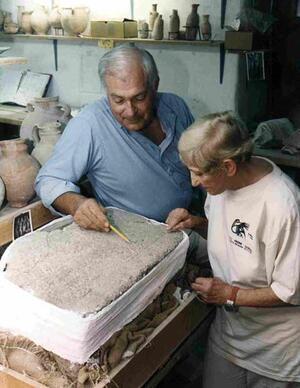
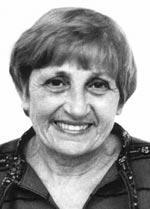
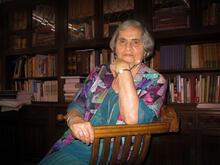
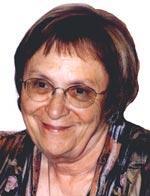
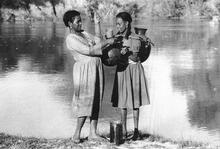
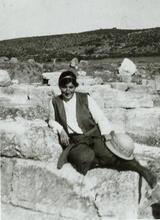
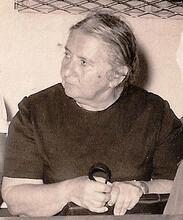


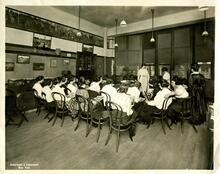
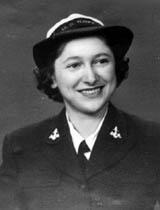
![blue.jpg - still image [media] blue.jpg - still image [media]](/sites/default/files/styles/medium/public/mediaobjects/blue.jpg?itok=RkdKmpf6)

